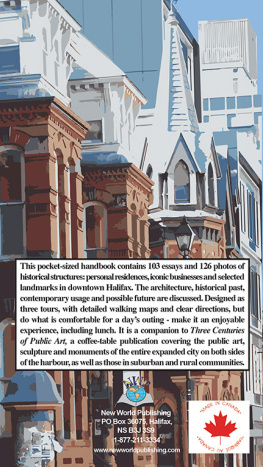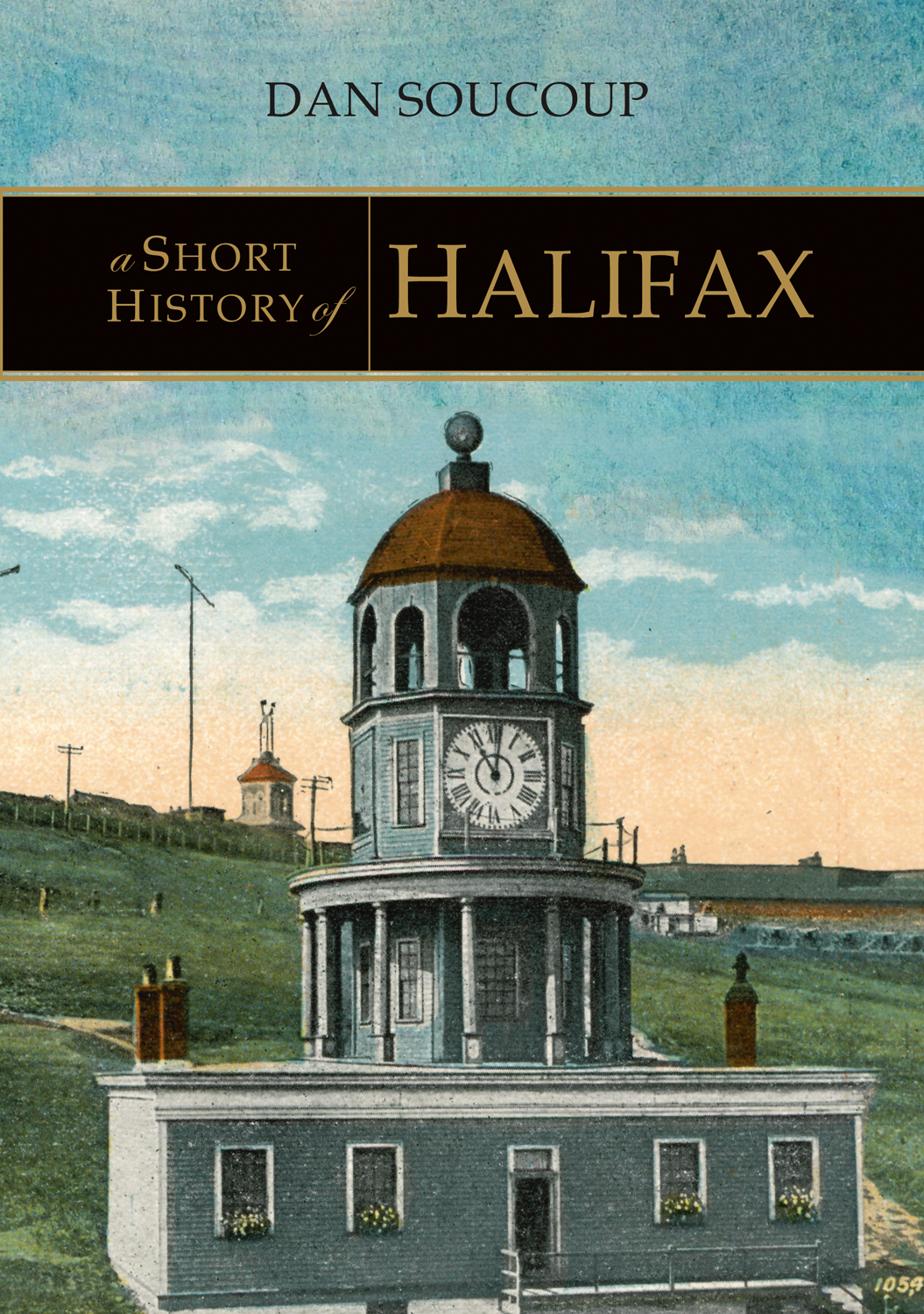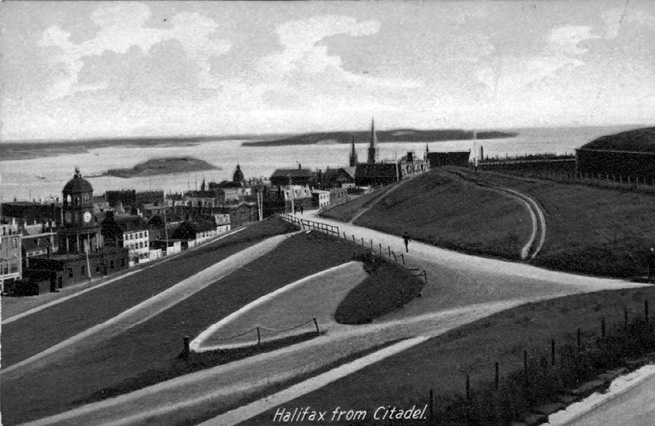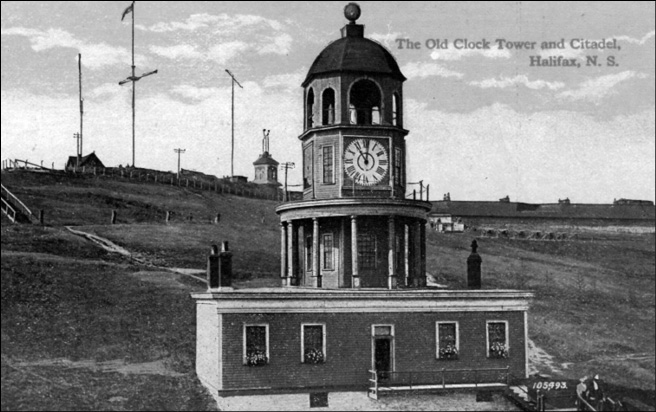Copyright 2014, Dan Soucoup
All rights reserved. No part of this book may be reproduced, stored in a retrieval system or transmitted in any form or by any means without the prior written permission from the publisher, or, in the case of photocopying or other reprographic copying, permission from Access Copyright, 1 Yonge Street, Suite 1900, Toronto, Ontario M5E 1E5.
Nimbus Publishing Limited
3731 Mackintosh St,
Halifax, NS
B3K 5A5
(902) 455-4286 nimbus.ca
Printed and bound in Canada
NB1126
Cover and interior design: Heather Bryan
Library and Archives Canada Cataloguing in Publication
Soucoup, Dan, 1949-, author
A short history of Halifax / Dan Soucoup.
Includes bibliographical references and index.
Issued in print and electronic formats.
ISBN 978-1-77108-184-9 (pbk.).ISBN 978-1-77108-185-6 (pdf).
ISBN 978-1-77108-186-3 (mobi).ISBN 978-1-77108-187-0 (html)
1. Halifax (N.S.)History. I. Title.
FC2346.4.S69 2014 971.6225 C2013-908100-3
C2013-908101-1
Nimbus Publishing acknowledges the financial support for its publishing activities from the Government of Canada through the Canada Book Fund (CBF) and the Canada Council for the Arts, and from the Province of Nova Scotia through Film & Creative Industries Nova Scotia. We are pleased to work in partnership with Film & Creative Industries Nova Scotia to develop and promote our creative industries for the benefit of all Nova Scotians.
And Halifax, more than most townsseemed governed by a fate she neither made nor understood, for it was her birthright to serve the English in time of war and to sleep neglected when there was peace. It was a bondage Halifax had no thought of escaping because it was the only life she had ever known.
Hugh MacLennan, Barometer Rising
Contents
View From The
Citadel
Looking southeast from the Citadel, c.1910. The Old Town Clock is visible on the left, while Georges and McNabs Islands are in full view in the background.
Courtesy Dan Soucoup
C LIMBING CITADEL HILL one spring day in 2013, I was struck by the enormous transformation that was taking place throughout Halifax. A dozen lift cranes were visible around the city, yet it still seemed possible to imagine what a marvellous sight the long harbour would have been thousands of years ago when the early people of the Maritimes first caught a glimpse of the massive waterway. The harbour, teeming with fish, sea mammals, and shellfish, would have provided ample sustenance to these early people who returned each summer to fish and hunt. The harbour is still magnificent, and as many writers have claimed, it is the reason for the citys existence.
The first Europeans to visit the harbour were so impressed that they established fish-drying operations on McNabs Island and began planning a fortress that would take shape centuries later, when the harbour became the strategic hub on the North Atlantic for the greatest Empire to span the globe.
From the Citadel, perhaps more than any other vantage point, the layers of Halifaxs history can be readily viewed, revealing earlier times and historic structures, while the bustle of contemporary activity continues unabated. To the east, Georges Island sits in the harbour with both an oil refinerysoon to close downand Eastern Passage in the background on the Dartmouth shore. Immediately below the Citadel stands the Old Town Clock, so familiar to Haligonians and the subject of one of Joseph Howes best known poems that begins Thou grave old Time Piece, many a time and oft/ Ive been your debtor for the time of day.
Below the clock runs the once rough-and-tumble Barrack (Brunswick) Street with Carleton Housethe oldest stone building in the cityvisible on Argyle Street but set to be blocked from sight once the new Nova Centre goes up. At the bottom of George Street is Chebucto Landing at the waters edge. Once known as Market Wharf due to the Green Market nearby, this was the site where Edward Cornwallis and his settlers first came ashore in 1749 to tame the forest and build their fortress. Not much more than one hundred years ago, tall ships and schooners crowded the old wharves, dingy sheds, and warehouses along Water Street. Nearby the Halifax-Dartmouth passenger ferry can be seen plying its way across the harbour, while south of the landing, the cupola of the Bedford Row Post Office is visible. This building was once the tallest structure in the city and the site where Second World War censor H. B. Jefferson held court, dictating what could and could not be published.
The Old Town Clock from Brunswick Street looking west to Citadel Hill, c.1914
Courtesy Dan Soucoup
To the north of Citadel Hill, where the towns first expansion took place, the Garrison Chapel and North Barracks have long since been swept away, but the historic Royal Naval Dockyardnow the Royal Canadian Naval Dockyardis still visible. Further along the harbour is the Irving-owned Halifax (now Irving) Shipyard with its impending $25 billion frigate-building program that promises to become the regions biggest industrial project. The two bridges between Halifax and Dartmouth are visible as well as the smokestacks at Tufts Cove Generating Station. At The Narrows of the harbour one can imagine the convoys of 1944 with one hundred vessels or more steaming from the Bedford Basin towards the open sea to face the threat of U-boat attacks. And still further north, beyond Stadacona (Wellington Barracks) lays old Richmond, where the Halifax Explostion, the largest man-made explosion prior to the atomic attacks of 1945, destroyed the citys first industrial expansion, killing 1,600 people and injuring 9,000 more.
To the west and beyond Halifax Common (the Commons), the city expanded during its second hundred years. The arteries of Quinpool, Robie, Windsor, and Chebucto all led away from the city as citizens moved to escape the downtown congestion and built more affordable accommodations in the small villages and hamlets of Dutch Village, Armdale, Rockingham, and Spryfield. The North Commons, where imperial garrisons undertook field manoeuvres and raced horses, is still largely intact, although a new skating oval has been installed on the south side. The old South Commons has given way to Camp Hill Cemetery, Wanderers Grounds, Public Gardens, Victoria Park, and the more recent Citadel High School. The roof of the QEII Health Sciences Centre abruptly brings the twenty-first century into focus as an EHS air medical helicopter lands to deliver a patient in need of critical care.
To the south, the historic Cambridge Military Library can be seen at Royal Artillery Park. Established prior to 1820 by Lord Dalhousie, the collection includes many classics transported from the British garrison library at Corfu after the imperial troops quit the island in 1864. Behind the military park numerous new high-rise structures are situated and further left is the citys second major hotel, the Nova Scotian, (the Lord Nelson Hotel had opened in 1928) built near the railway terminal in 1930. Next door, stand the new Seaport Farmers Market as well as the National Historic Site Pier 21, which welcomed over one million immigrants to Canada throughout the twentieth century. Further south is the old grain elevator where prairie grain is still shipped to all corners of the globe. The citys first container pier, Halterm, is nearby with the now iconic red and white lift cranes jutting out into the harbour.














